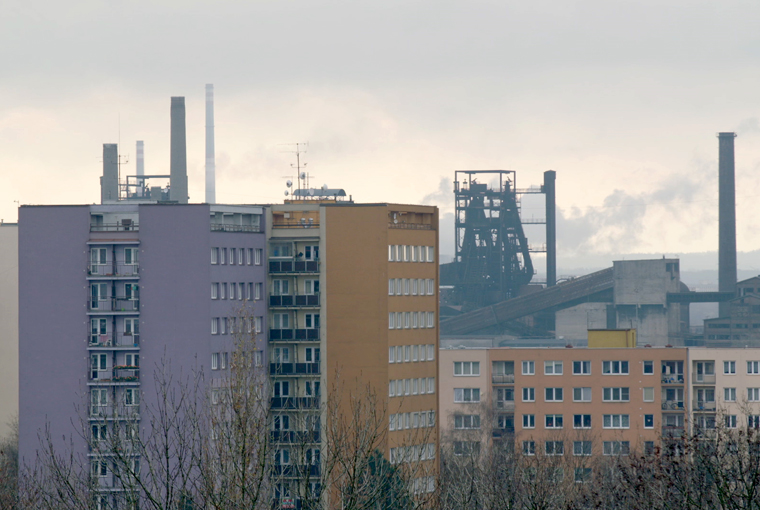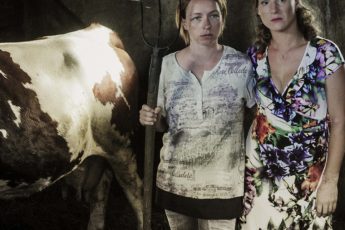Out of the Pit and Into the Fire
Jindřich Andrš’s A New Shift (Nová šichta, 2020)
Vol. 111 (January 2021) by Zoe Aiano
Picking up from where his short film The Last Shift of Tomáš Hisem left off, Jindřich Andrš’s feature documentary A New Shift tells the story of life-long miner Tomáš in his attempt to transition from blue collar to white collar labor. Following mass layoffs at the coal mine in Ostrava, Tomáš is one of the newly unemployed who opts to try out the Czech government’s re-training program, also titled “Nová šichta”(“New Shift”), with the hopes of starting a new career in computing. The central question posed by the film is thus whether there are truly any hopes for reintegrating manual workers in the post-industrial economy. More specifically, can Tomáš learn to adapt, and, if he does, is there even any space for him in the labor market?
The whole process requires a lot of determination and resilience. The first barrier is that of his erstwhile colleagues, who find the idea totally absurd. While at the beginning they offer some kind of passive support by conceding that he may as well try, as time passes and Tomáš receives no interest from potential employers they begin to ridicule him for thinking that a leopard could change its spots. After all, he’s up against younger generations who grew up with computers, so how can he compete on the basis of just four months of basic training? Moreover, most of the jobs are in Prague and many would require him to speak English. As desperation sets in, the only thing stopping him from going back to the mine is his wounded pride.
His transformation is also a physical one. After leaving the mine, he symbolically cuts off his long ginger hair (which seems to get greyer as the process drags on). More pointedly, when he finally does find a position in IT, he also gets new teeth. Likewise, at the beginning of the film, he is seen almost exclusively wearing the blue t-shirt of his favorite football team, but over time this is replaced by a more office-appropriate range of sweaters. This touches on the secondary issue – assuming that mass reintegration of defunct industrial workers is possible, what are the implications for working class culture? Is there only space in the new economy for those who are willing to assimilate and self-gentrify?
The film comes close to providing an only too neat answer to this during a key scene in which the newly employed Tomáš gives a Ted Talk on his experience of undergoing re-training. He captivates the audience and speaks eloquently and self-reflectively, but he does so in his own personal style. At the beginning of the film, he comes off as larger than life, with his defiantly 1980s style, habitual swearing, and smoking under the shower. However, over the course of his job search, the combination of stress and the need to conform mute his personality, so it’s significant that he seems to have managed to retain his original character. Thankfully, however, the film doesn’t end here with an implausible happy ending, but rather continues to show him progressing in his new work environment, where he comes to realize the disadvantages of office life and begins to be nostalgic for his decades down the mine. Clearly, though, there’s no going back.
The Ted Talk scene also hints at the question of who is invested in Tomáš as the poster boy for the success of the government scheme. Without casting aspersions on his ability to carry out his new role, in which he seems perfectly competent, it is still reasonable to ask if he would have gotten there without the cameras being pointed at him? Of course, it may also have had the opposite effect and put off potential employers. The film ends with a series of captions by listing statistics but without providing any further analysis or commentary. Out of the four miners who retrained in IT, three are now employed in the sector. Is 75% a good success rate, though, and what use is a program with a take-up of only four out of several hundred? What happened to the rest of the miners? The filmmaker seems tentatively optimistic about the whole endeavor, but on the face of the evidence presented it seems that the scheme isn’t far reaching enough, and should at least involve some kind of a work placement to be even remotely viable.
The neatness of Tomáš’s narrative arc notwithstanding – neatness always being a suspicious quality in documentary – A New Shift does a good job of addressing a massively crucial but under-discussed and, let’s face it, inherently unsexy topic in an engaging, thoughtful way. Moreover, it stays true to the specificity of its local context while making it more universally interesting. It does so thanks in part to the choice of a likeable protagonist it’s impossible not to wish well, but also to the accomplished directing and editing.




Leave a Comment